As an aspiring entrepreneur, there is no doubt that you want people to use your product.
That is why you conceived an idea, and started building it in the first place.
But, regardless of its perfect features, unless it reaches the users’ eyeballs, it would not have any demand.
Buying every advertisement slot on YouTube or Facebook is neither an effective solution nor cheap.
Even if you have the means to do so, your product’s messaging has to strongly resonate with your audience.
That is when they would even think of using your product.
Let’s look into how you can accomplish that.
What is product positioning?
From prioritizing features during development to ensuring good turnout during launch, product positioning is more than mere marketing.
Standard definitions would tell you that is all about where your product fits in the marketplace.
That is hardly the whole picture.
For modern products, product positioning is the process of taking the users’ needs, putting them through the developmental engine, and delivering value and benefits to your customer base.
All the stuff about figuring out your product’s USP and its key differentiators and so on materialize only when you build something resembling a product-market fit.
There is a lot that you would need to do to be able to position your product properly — market research, user persona creation, competitor analysis, and so on.
That might seem like too much work, but it is worth your time.
Why does product positioning matter?
In this hyper-digital tap-to-skip era, blind marketing efforts do not yield results.
Consumers are bombarded with a lot of advertisements and choices on an hourly basis which have made them very dismissive of poor messaging.
If your product’s explainer does not tell them exactly why they should care, they won’t.
This is where product positioning comes in.
Keeping your target audience in focus at all times, product positioning helps you to formulate initiatives, strategies, and solid messaging that is bound to drive clicks.
It also helps your overall marketing efforts become more cost-effective and accountable.
Catch-all marketing like billboards is expensive whose value can hardly be tracked.
But with a well-positioned strategy, you spend less and also track how many people it has reached.
Components of product positioning
Before we get into the nitty-gritty of it all, let’s have a look at the basic components.
Product Vision
A tool that helps with internal alignment, having a product vision helps you foster innovation and camaraderie among your employees.
It gives them a shared sense of purpose and also informs them why they are building the product in the first place. After all, there are so many other products on the market. Why another?
Product Mission
An offspring of the product vision, it takes the aspirations of your product vision and turns them into trackable, assignable goals.
A product ‘mission’ is also what it sounds like — it pinpoints the exact reasons your product should be built.
Having a concrete product mission and an aligned team is very important, because, without internal harmony, external positioning becomes a hellish task.
Users’ Needs/Customer Painpoints
Product ideas are meant to solve problems.
But conducting research and interviewing users can help you skim the imaginary from the actual ones.
Pinpointing every issue your user has when they try to do something also brings in relevancy to your developmental efforts.
This is why building MVPs and validating product-ideas make so much sense.
Even if you get the needs right, you might miss the mark with your solution.
Market Category
Once you narrow down your users’ needs, the obvious next step is to figure out your ‘market category’, or where you fit in the grand scheme of things.
Your product does not and should not solve every problem out there.
Instead, it should focus on catering to a few needs with precision and quality.
Identifying your market category does two things.
It makes your product vision more realistic, as it shows you market-gaps that you can fill without failing.
It also helps you identify your exact competitors.
User Personas
This is where you would merge the users’ needs along with the market-gaps to segment your customer base into multiple categories.
Simply put, a user persona is a representation of a specific group of people who would use your product. Say, “top product managers who love automation” instead of just “product managers”.
To cater to each persona, you can have a different set of complementary features on top of your core product.
How do you properly position your product?
Understand your customers
The first step in crafting an effective product positioning plan for yourself is getting to know your users intimately.
This means that you would have to look beyond the standard demographic details — age range, geographic locations, etc. You would have to step into their shoes and understand how they see the world.
You would need to understand their goals and the motivations behind those.
Surveys and intimate focus group interviews are not that expensive and get you the basic answers that you need. But rather than just a one-off thing, your market research needs to go on and on.
Because there is always something new that you can learn and utilize in your product positioning.
Effective marketing happens when you know your customers’ needs and wants as specific facts. It is not about every female UX designer; it is about women above 30 who are in senior-level positions and need something to track their daily workout routines. (Just an example.)
To reach that level of intimate understanding, you need to ask the following questions:
- How old are they?
- What is their highest level of education?
- What are the typical duties of their role?
- What are their hobbies?
- Do they seek out new information? If so, how?
This overall exercise needs to be repeated for every specific ‘persona’ within your target audience.

Analyze the market and differentiate
For every product, there are hundreds of others running on the track, side by side.
Weighing in every competitive factor is a must when it comes to product positioning.
An effective plan tells consumers why they should prefer your product. This can happen only when you know what your competitors are up to, and use that knowledge to do something different than them.
After all, you gain nothing if you are a complete clone of your competitor.
But what do you do if there is not much to differentiate between you and your competitor?
With Slack taking up the popular vote for the workplace app, there is not much that a similar product can do to stand out.
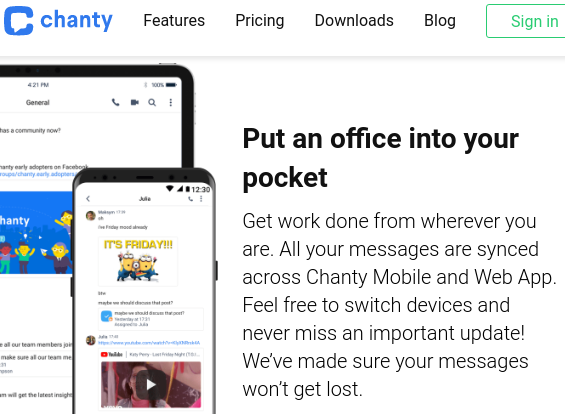
However, Chanty differentiates itself by being more chirpy.
As opposed to the get-work-done attitude of Slack, Chanty tries to bring out the fun aspect in working at an office. They even call it out directly:
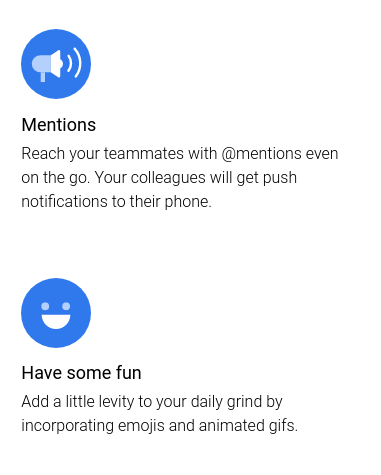
A similar example is that of Milk Duds. As opposed to M&Ms’ peanut-sized confectionery, Duds take longer to eat. Essentially, your sweet tooth has a longer experience — a key differentiator.
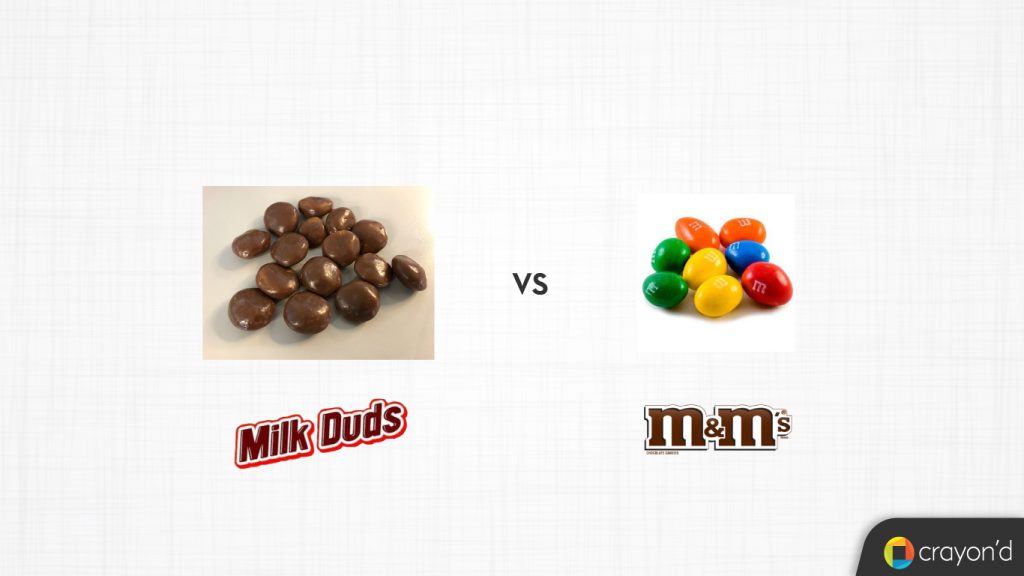
With proper analysis comes proper insights. While Hotjar thought that their competitors like Mouseflow, the truth was that their biggest competitor was Google Analytics.
In hindsight, it was obvious — Google Analytics was free and had a brand reputation that they did not.
To differentiate, they decided to ditch the numbers and instead tell users that they can provide insights without any clutter.
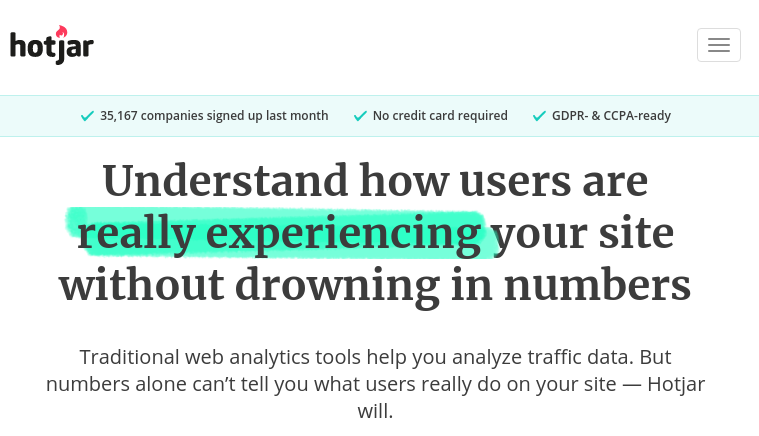
Assess your product and bring out the benefits
While the above examples are simple but powerful differentiators — Milk Duds are bigger than M&Ms and Hotjar is simpler than Google Analytics — they do not really shine until they are paired along with the benefits.
For every feature that solves a user-need, there is a benefit that can be articulated.
Let’s take a look at how Slack does it:
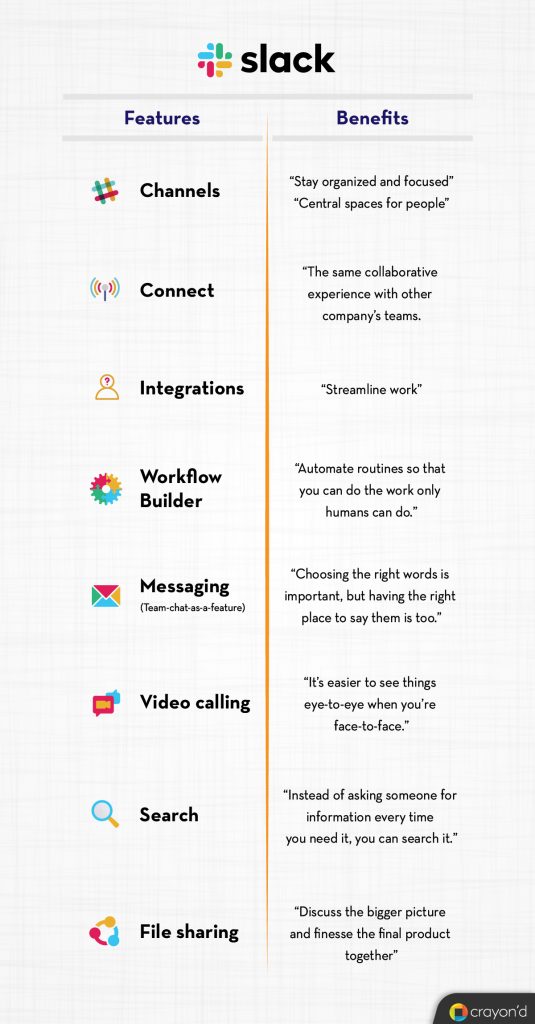
Non-features such as intuitive UX, faster loading speeds, and others can also be benefits.
Once you have made a list of all of these, you can use them to supplement your product category.
A separate topic of its own, most product categories end up in either:
- Frenemies: Aka head-to-head, this is when they are generally two main competitors in the market that constantly try to outperform each other. It is a classic game where the audience is constantly watching. Think Coke versus Pepsi, Microsoft Teams versus Slack, Apple versus Google, and so on.
- Niche: Or you can carve out something completely new for yourself. Instead of going with the traditional feature-laden approach, Less Annoying CRM chooses to offer simplicity as an experience.
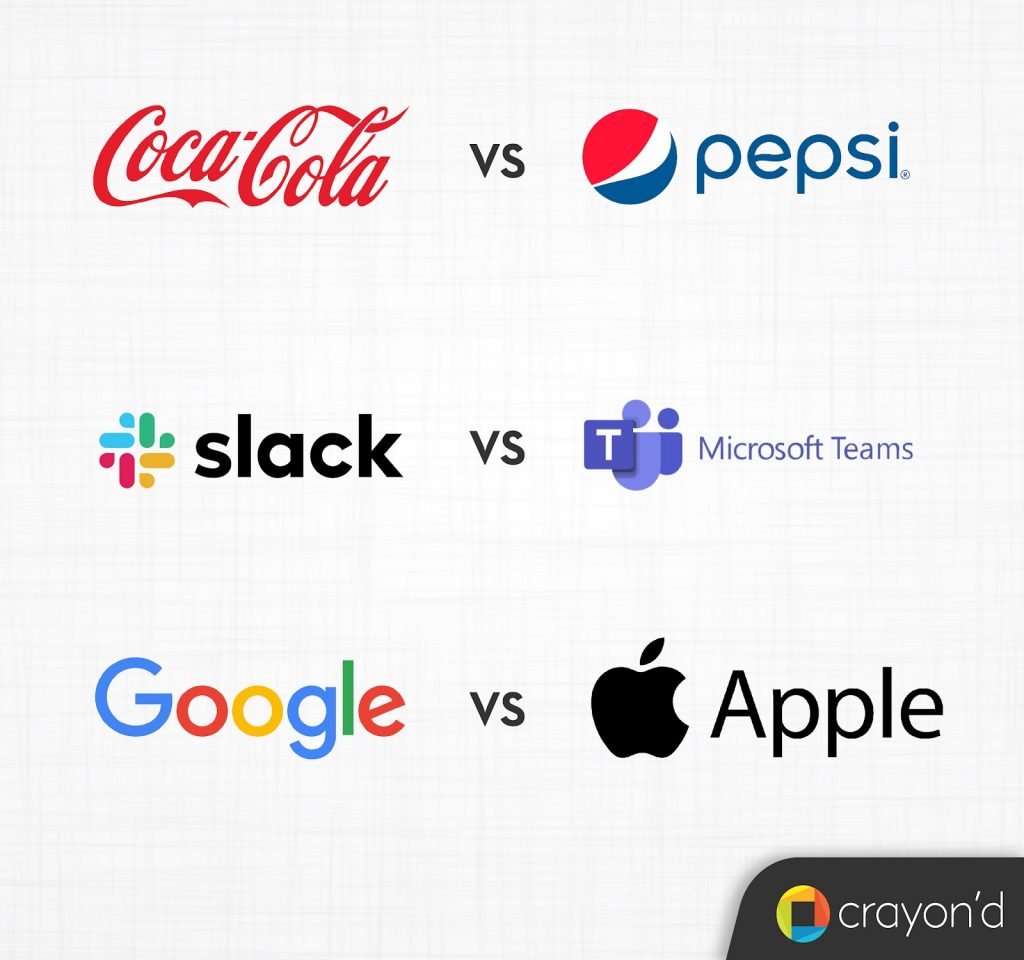
A prime example of frenemies is Intercom versus Drift. At the core, they have the same product: a chatbot that lets users talk to you directly.
Instead of waging a cultural war like Coke and Pepsi, these SaaS products have chosen to differentiate themselves via smart messaging.
Intercom takes a more ‘professional’ approach whereas Drift goes for ‘conversational marketing’.

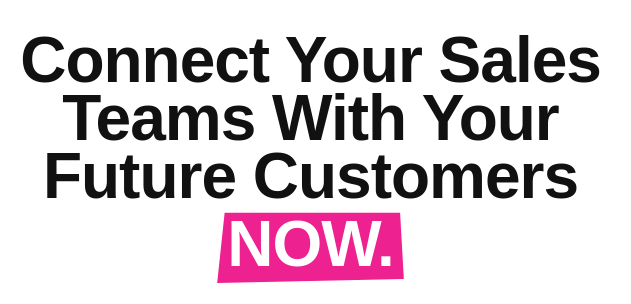
Even without their logos, which product is which is quite obvious — product differentiation done right. Also, Drift focuses on being immediate (“now”) whereas Intercom talks about the bigger picture (“lifecycle”).
Figure out how your personas should feel about your product
This is the most important and most complex part of your product positioning.
Taking all the user personas along with your market analysis and differentiating benefits, you would now think of how you can hit an emotional note with your audience.
This is quite hard to get right because it is more than just stating the unique value proposition over and over again.
The simplest way to kickstart this complex process is to think up a narrative.
Every company has a successful narrative woven around its standout product.
There are three general ways this can be done.
- Romancing the origin: You can talk about why it was conceived and how you think it makes a difference in the market.
- A sense of scarcity: Think Diamonds, offers on Amazon, discount sales at your nearby mall — they are all designed to make use of your desire to attain something that might “run out”.
- Torture-test situation: This elicits an emotional response immediately and requires your product to be read to match those expectations. In such a scenario, the most extreme use-case is talked about. Think along the lines of “code that never breaks” or “enterprise-security for your high-volume banking needs”.
Romancing the origin
Out of all the three, this one is the most universally applicable.
If there is a product, there is a passionate story behind it.
What inspires you to build it could become your narrative to persuade your audience.
Take a look at Notion: they have written “a story of tools and the future of work”.
In that, they talk about how visionaries like Douglas Engelbart dreamt a future where computers could augment intellect.
But all that has happened is a virtual replication of the same cabinet-file-folder, huge-storage-disks that need the human on every point to connect everything.
Their desire — to blend “much of your workflow into an all-in-one workspace” using “dozens of LEGO-style building blocks”.
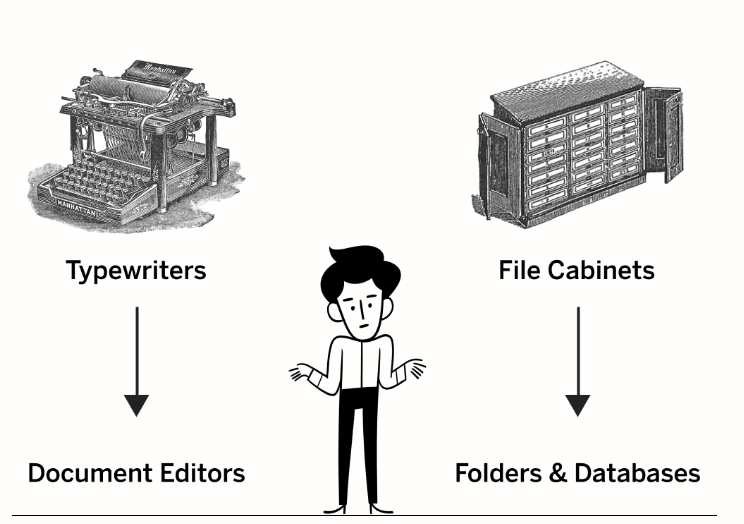
Write your product positioning statement
By the time you reach this section, your product positioning engine would have been set into motion.
Now, with this brief statement you would ensure that your entire team has something to align itself at all times.
Your product positioning statement should have the following:
- Your target audience
- Everything that makes your product stand out; the differentiators
- Why your customers should care about your product; the benefits
Here is the commonest template: For [group of users] that [need/want], [company/product] is a [category/solution] that uniquely solves this by [benefit].
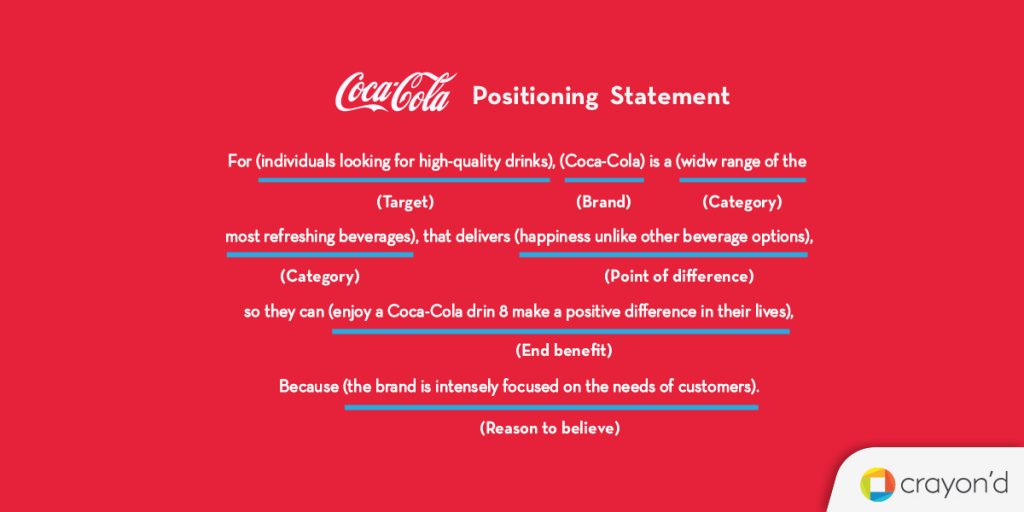
With this final step, you have put a working product positioning strategy in place.
Product Positioning Examples
B2C/Cultural
- Walmart: They position themselves as the one-stop-shop for the masses, positioning themselves as both ubiquitous and affordable.
- Their key differentiator is being “low-cost” as opposed to Target which instead positions itself as a “trendier”, “fashionable” brand.
- Doritos: Year after year, you see their ads during the Superbowl because they know that it’s a prime spot to advertise to the snack food market.
- Sugary cereals: A physical positioning, cereals are aimed at kids, use bright colors, and are placed in supermarkets at the eye-level of a child.
- Starbucks: The chain positions itself as a premium option, creating a perception of an upgraded, superior coffee experience.
Amazon, circa 2001
When Amazon was primarily an online bookstore, this was their positioning statement — “For World Wide Web users who enjoy books, Amazon is a retail bookseller that provides instant access to over 1.1 million books. Unlike traditional book retailers, Amazon provides a combination of extraordinary convenience, low prices and comprehensive selection.”
The “instant access to over 1.1 million books” is the biggest differentiator for Amazon as no other bookstore can claim to have such numbers.
They also highlight key benefits such as “convenience” and “low prices”.
SaaS products
Box
While Dropbox focuses on being a ‘modern’ workspace, Box goes for two key differentiators — simplicity and security.

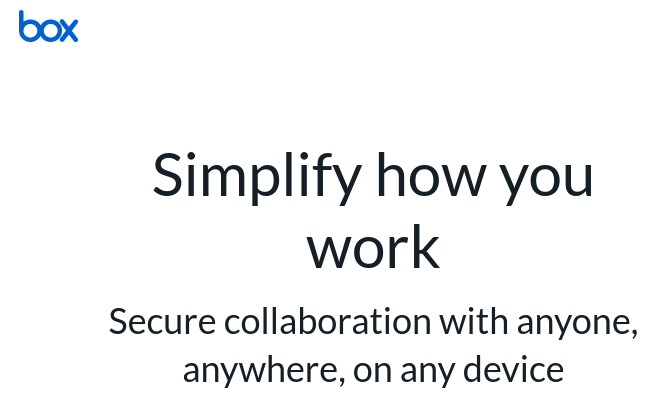
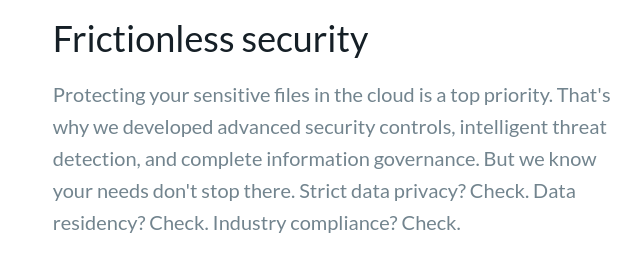
It is not that Box is any more secure than Dropbox, but their marketing copy and direct statements make users that they indeed are.
Amazon Web Services
A pillar to most SaaS products out there, AWS is just a smorgasbord of benefits. There is nothing more that we need to say — they put it all out there elegantly.

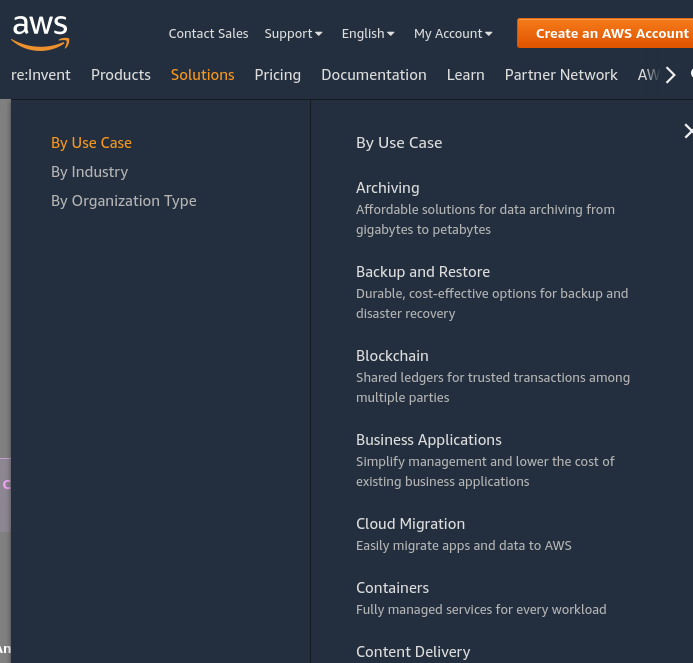
Slack
Their previous front page messaging was an almost-product-positioning statement.
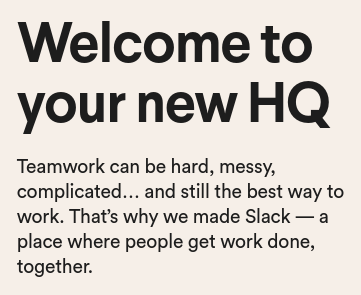
It implicitly states their target audience (teams) and the benefits (people get work done, together). It is just an almost-statement because it lacks the differentiators.
Twilio
Their SERP description is also an almost product positioning statement…

- Target audience: businesses
- Benefits: Strengthen customer relationships
… And their homepage brings out the emotional narrative.
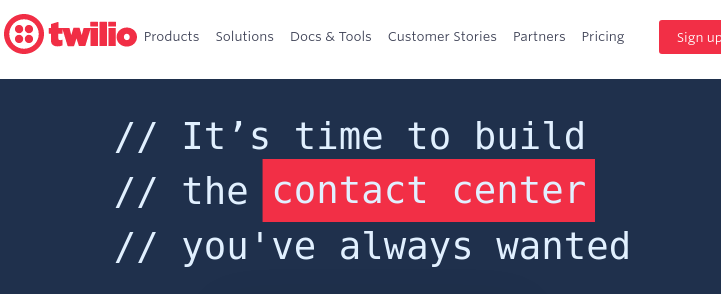
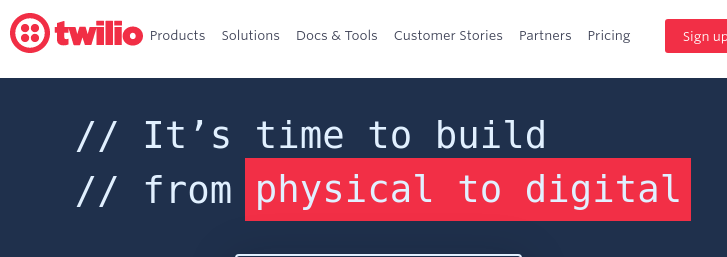
Mental tools for better product positioning
Perceptual Maps
These help you create a visual representation of your market analysis, clearly showing you where each product fits in the overall continuum of users’ needs.
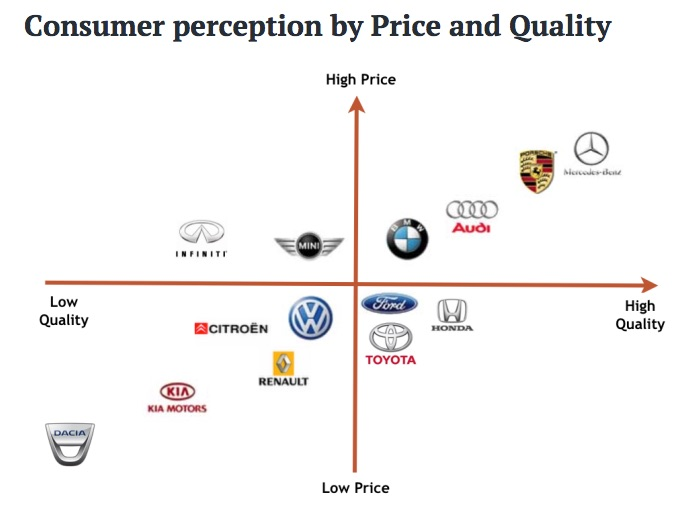
For your Saas product, you could either go for differentiating criteria like this or create your own.
Ansoff Matrix
Developed in 1957 by H. Igor Ansoff, this allows entrepreneurs and analysts to identify and categorize ideas and insights during the product positioning process.

Simple, elegant, actionable, and most of all, it helps you see both your product current potential and future growth/risk at the same time.
Lean Canvas
An offspring of the Business Model Canvas, the Lean Canvas brings together all the components of product positioning.
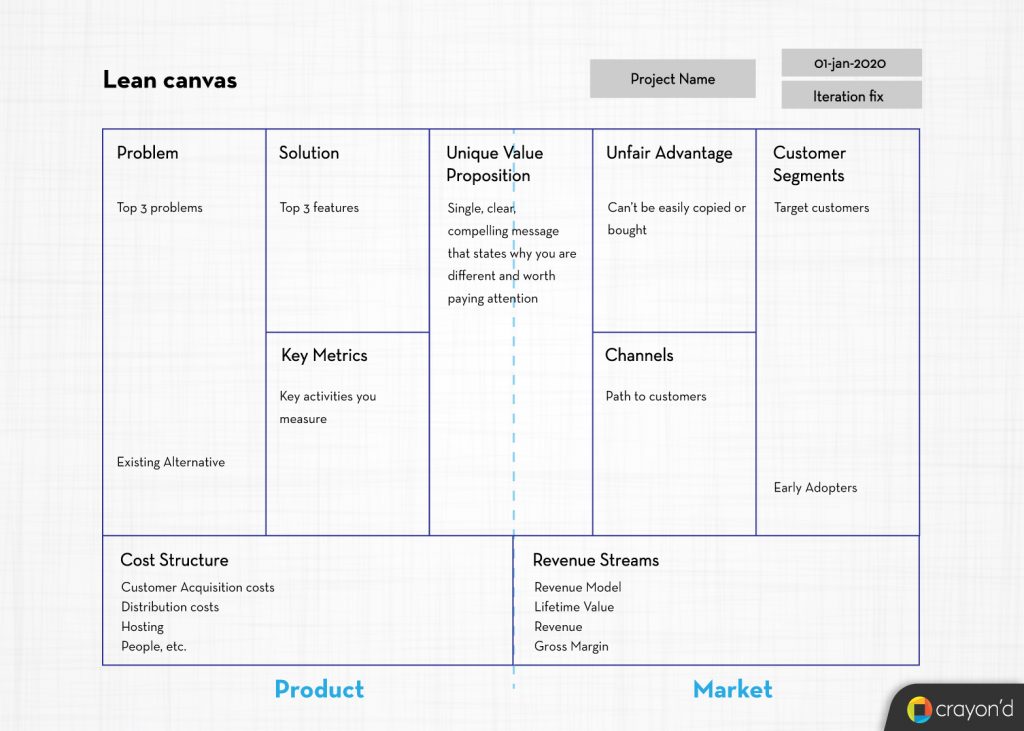
Restating our point from earlier, figuring out your product’s USP and its key differentiators and so on materialize only when you build something resembling a product-market fit.
But a Lean Canvas helps you visualize the whole action plan for achieving product-market fit.
On the left, you have the core components that your product needs to have to address the customer segments.
On the right, you have your unfair advantage that helps your product shine.
At the centre, you have the binding agent — the unique value proposition, which will also help you with your overall differentiation strategy.
Bottomline
Product positioning is a make-it-or-break-it moment.
Do it well, and you get a chunk of the market that likes your product and keeps coming back to it.
If not, then… well, they would not have even heard of you or understood you.
Sure, repositioning is always an option, but as companies like Google have shown us, offering the same product in different skins does not work out.
You have to get it right in the first go.
As an aspiring entrepreneur, all of these might overwhelm you.
Luckily for you, there are digital product agencies that specialize in these things.
With their knack for helping you understand your product’s key differentiators, they can put you on the path of proper product positioning.
So, what are you waiting for?
Reach out to one of them right away!







Add comment